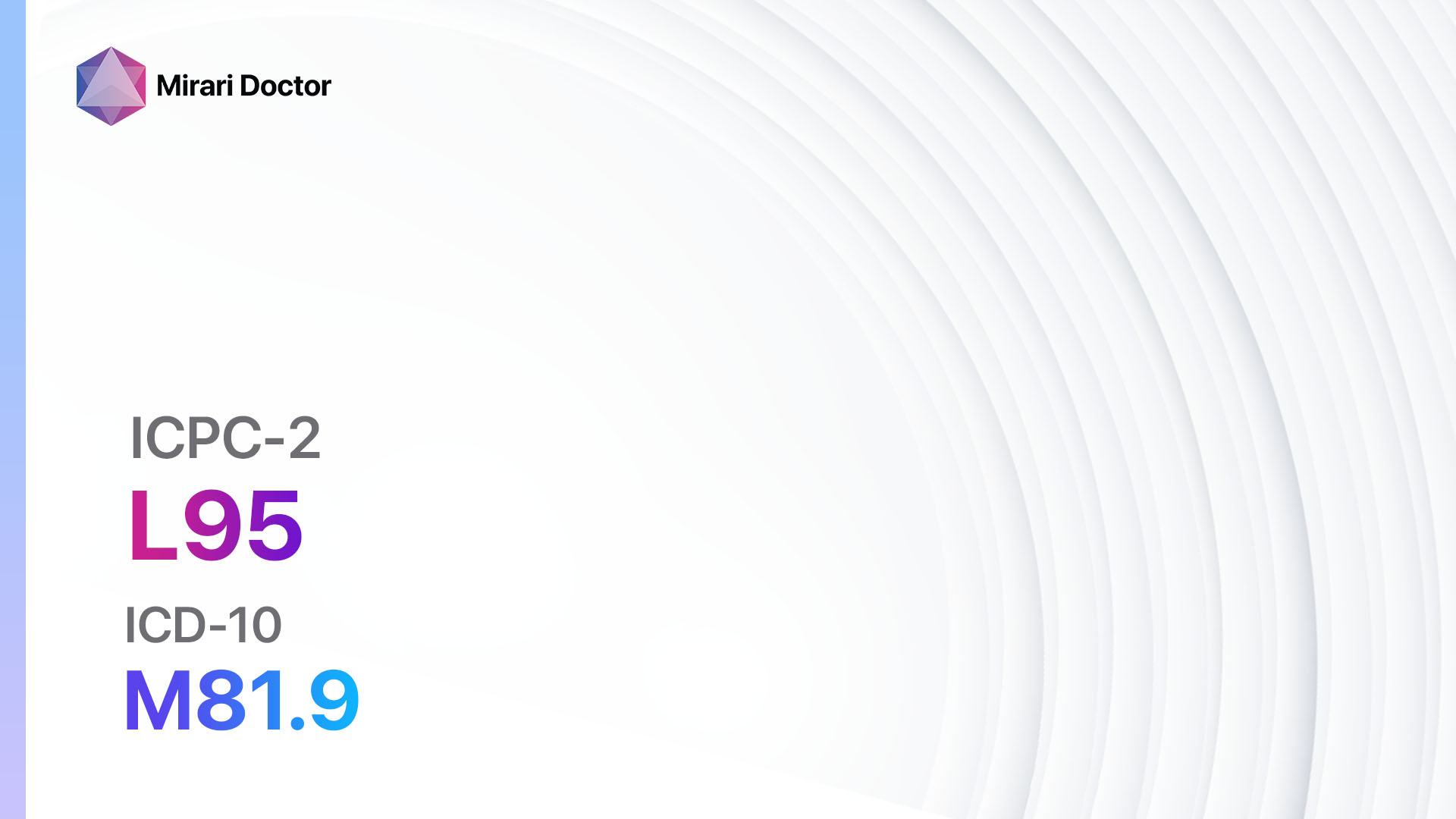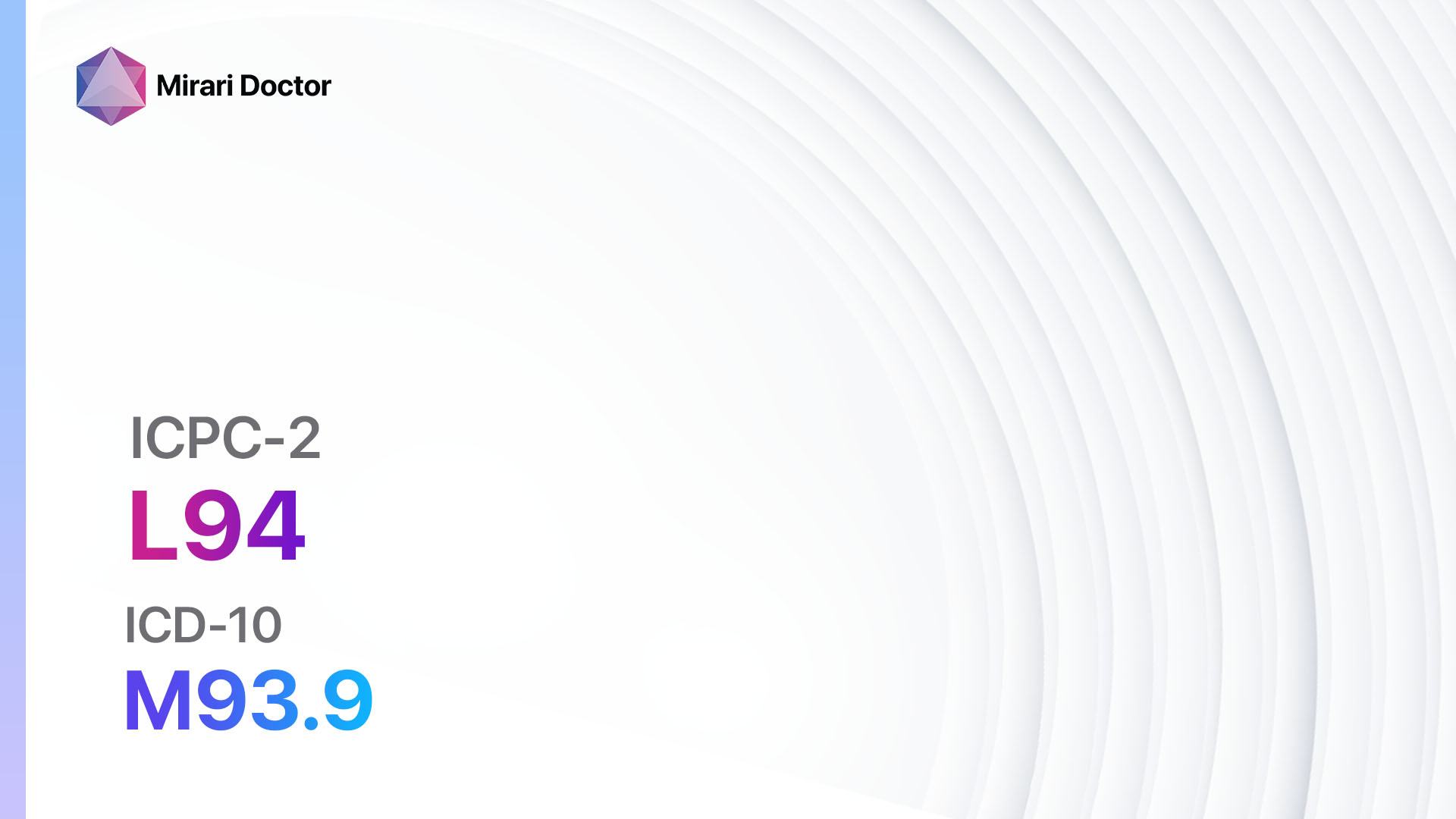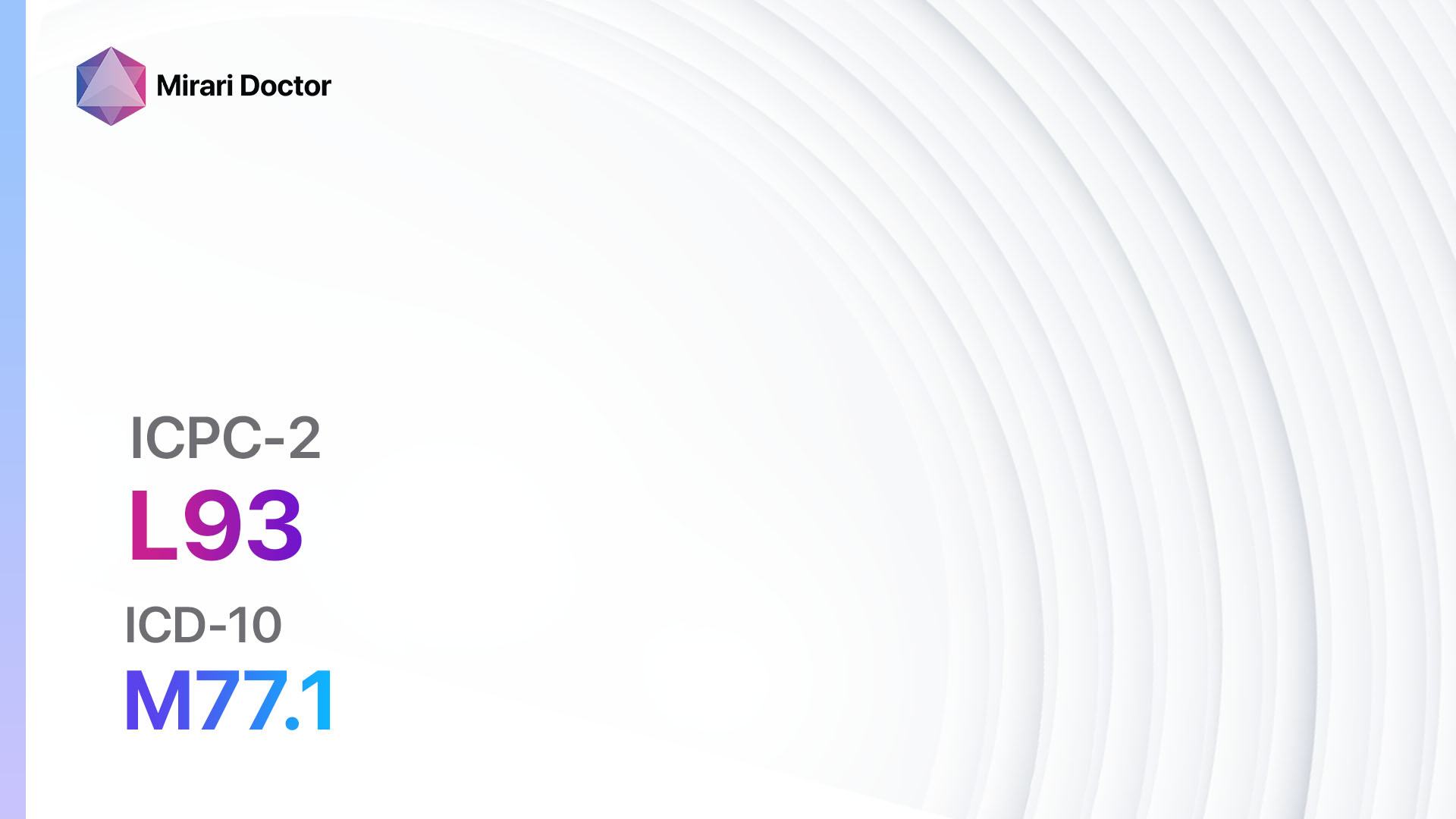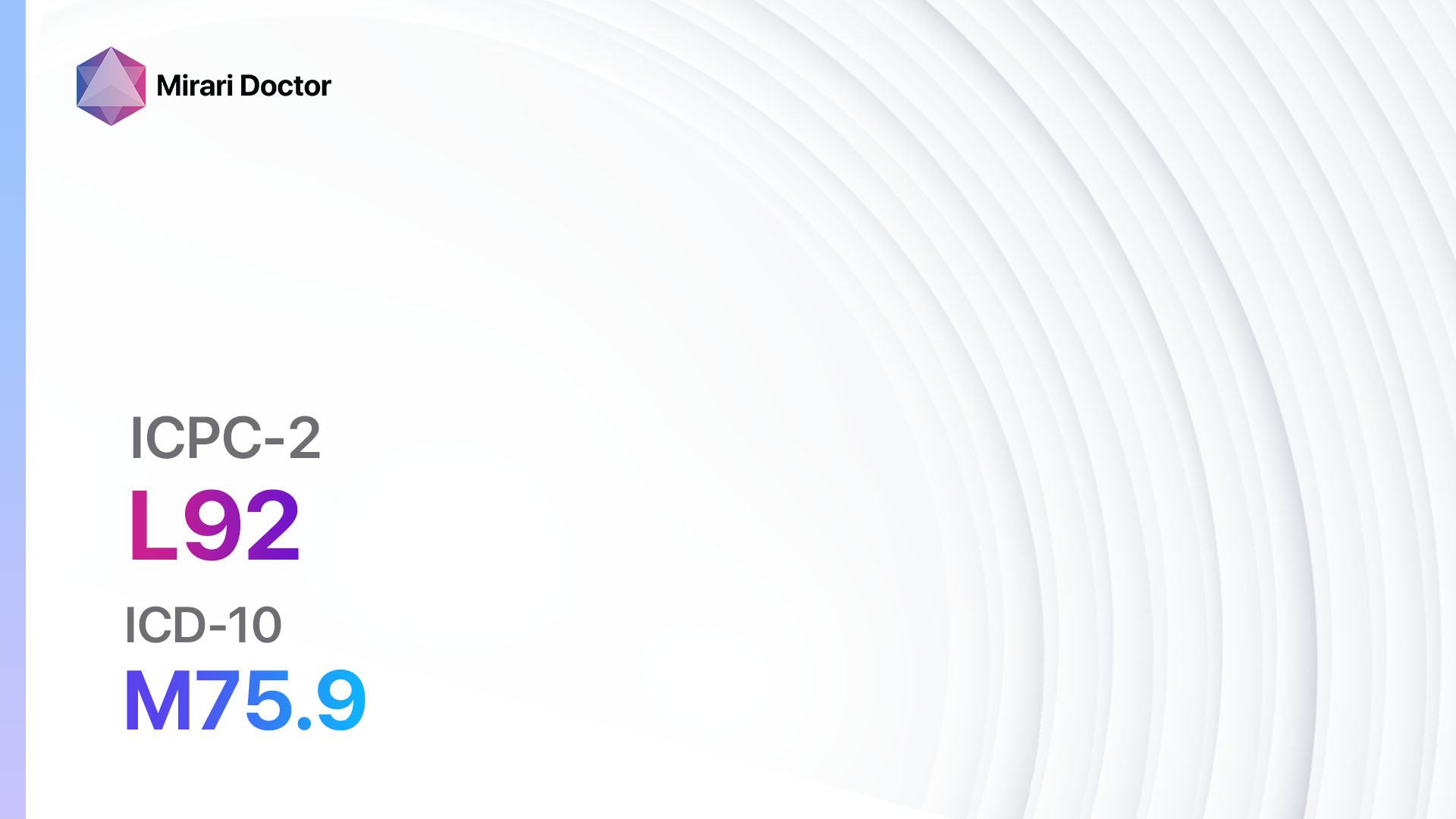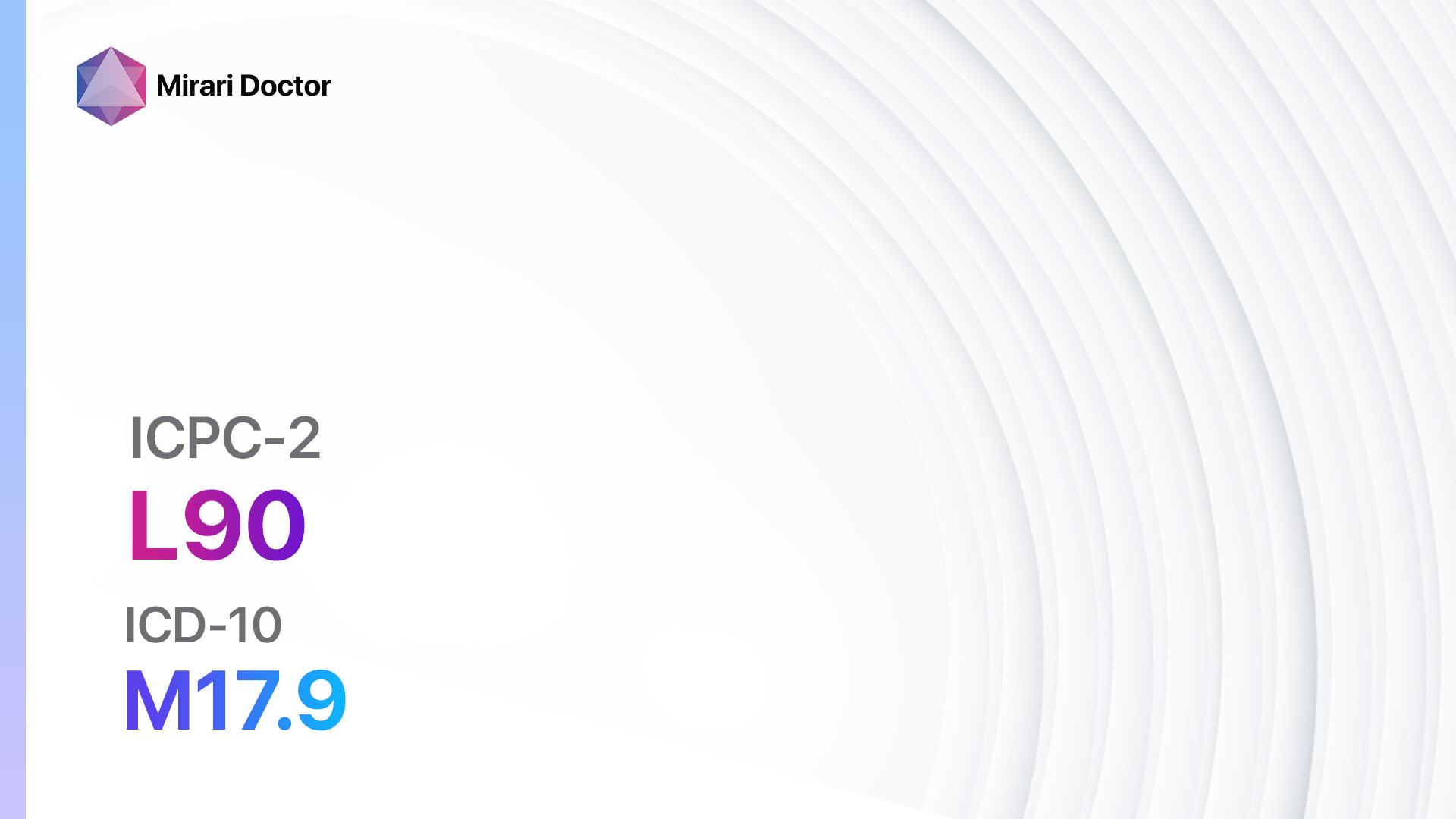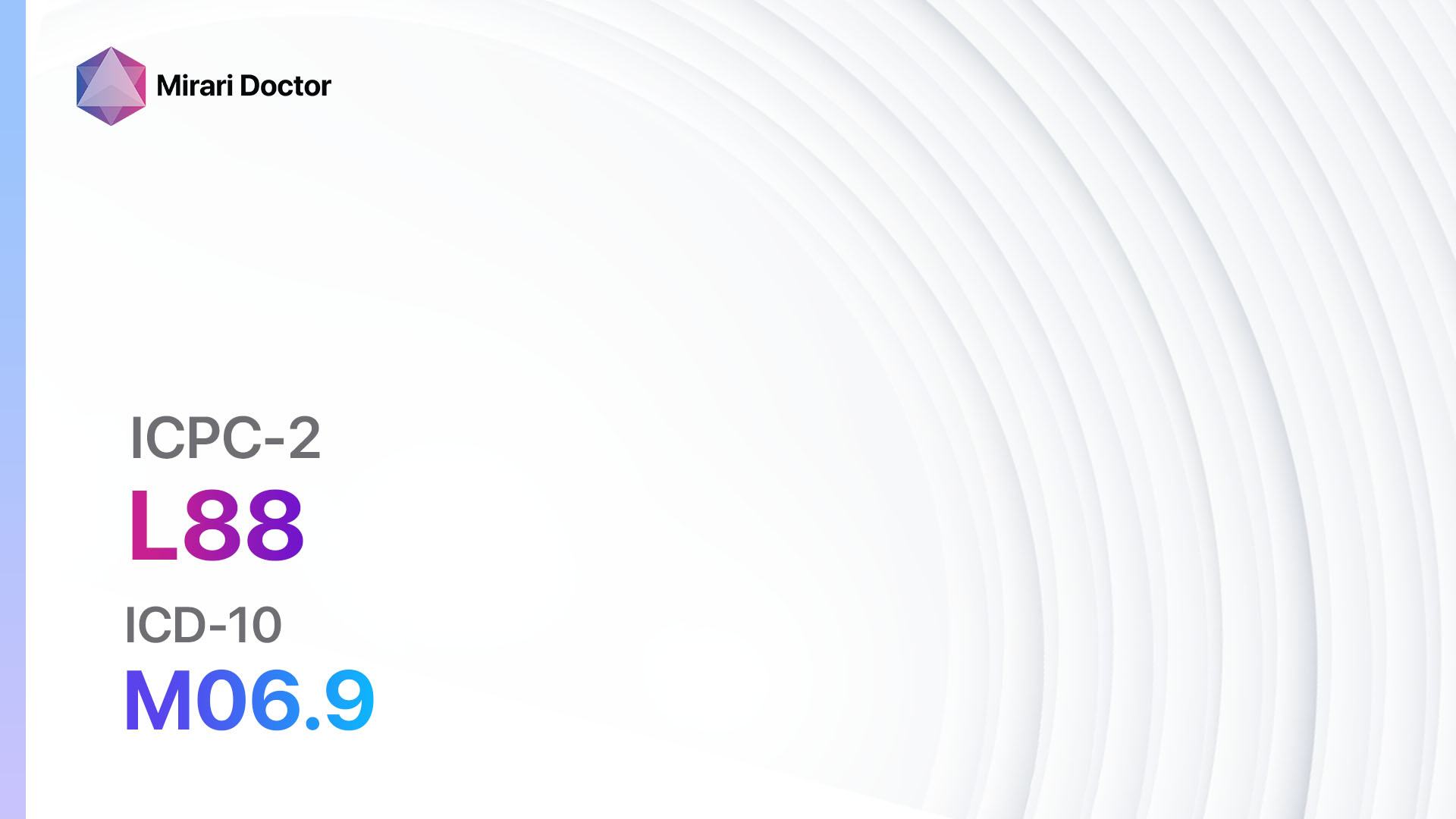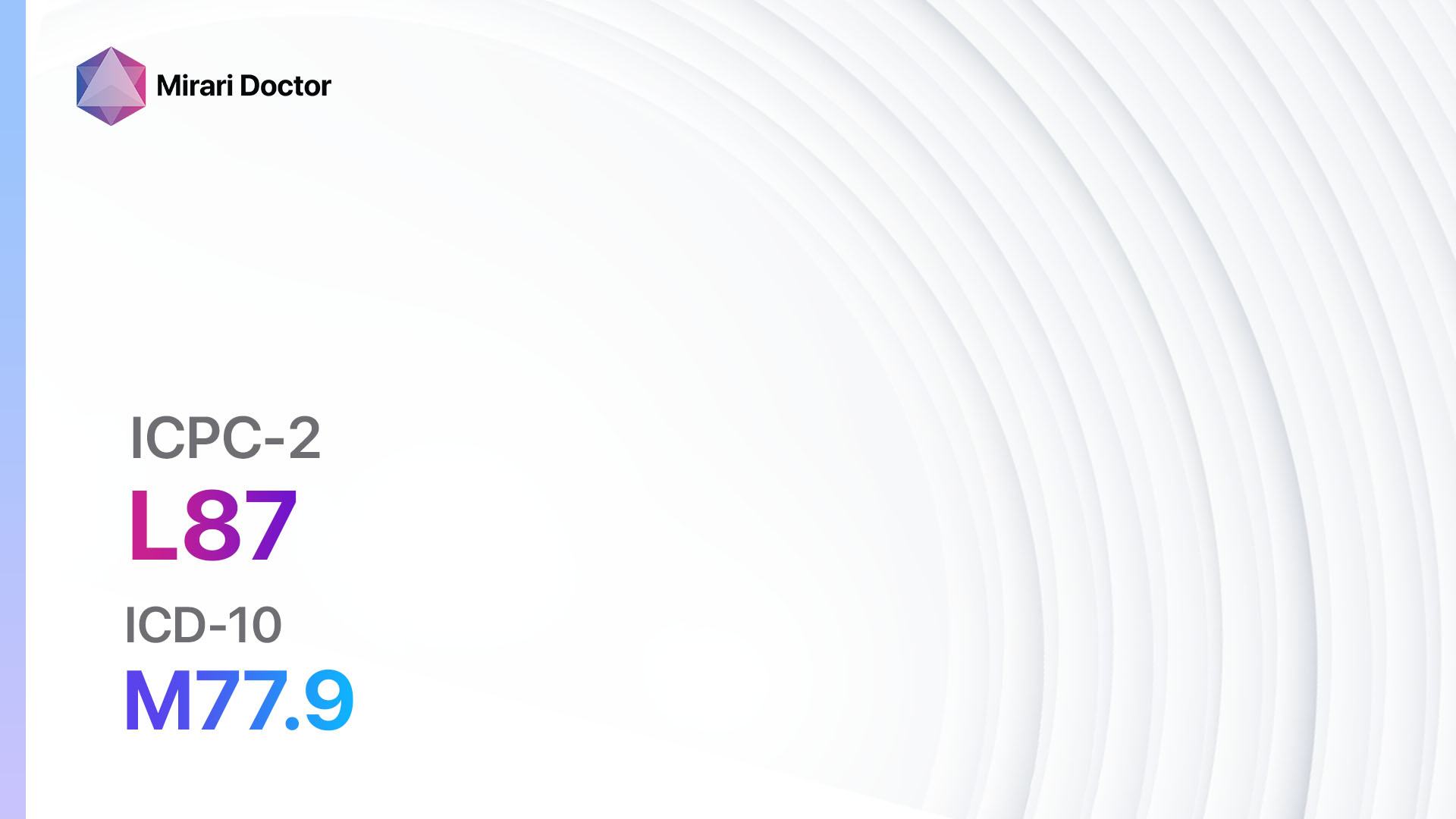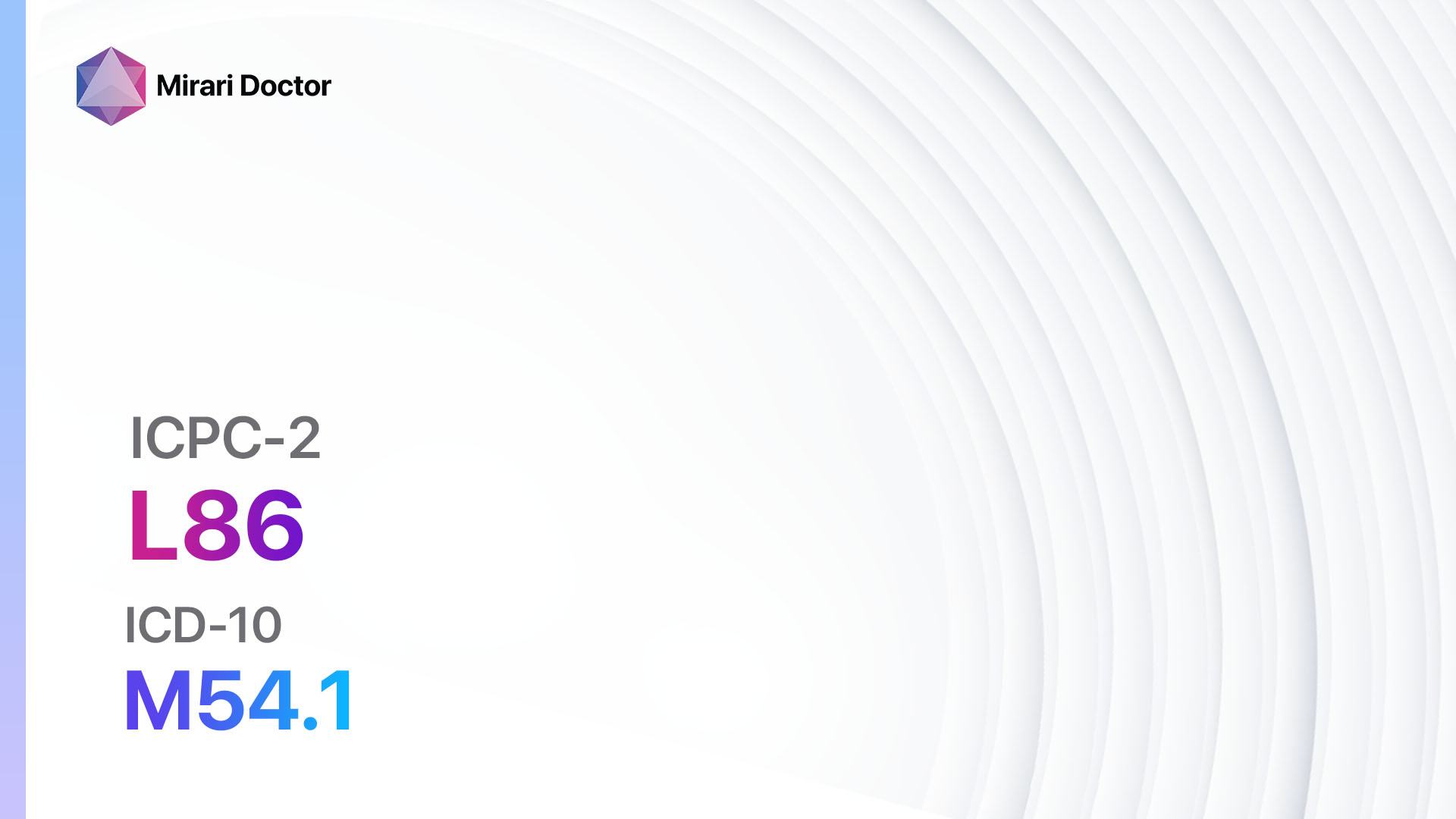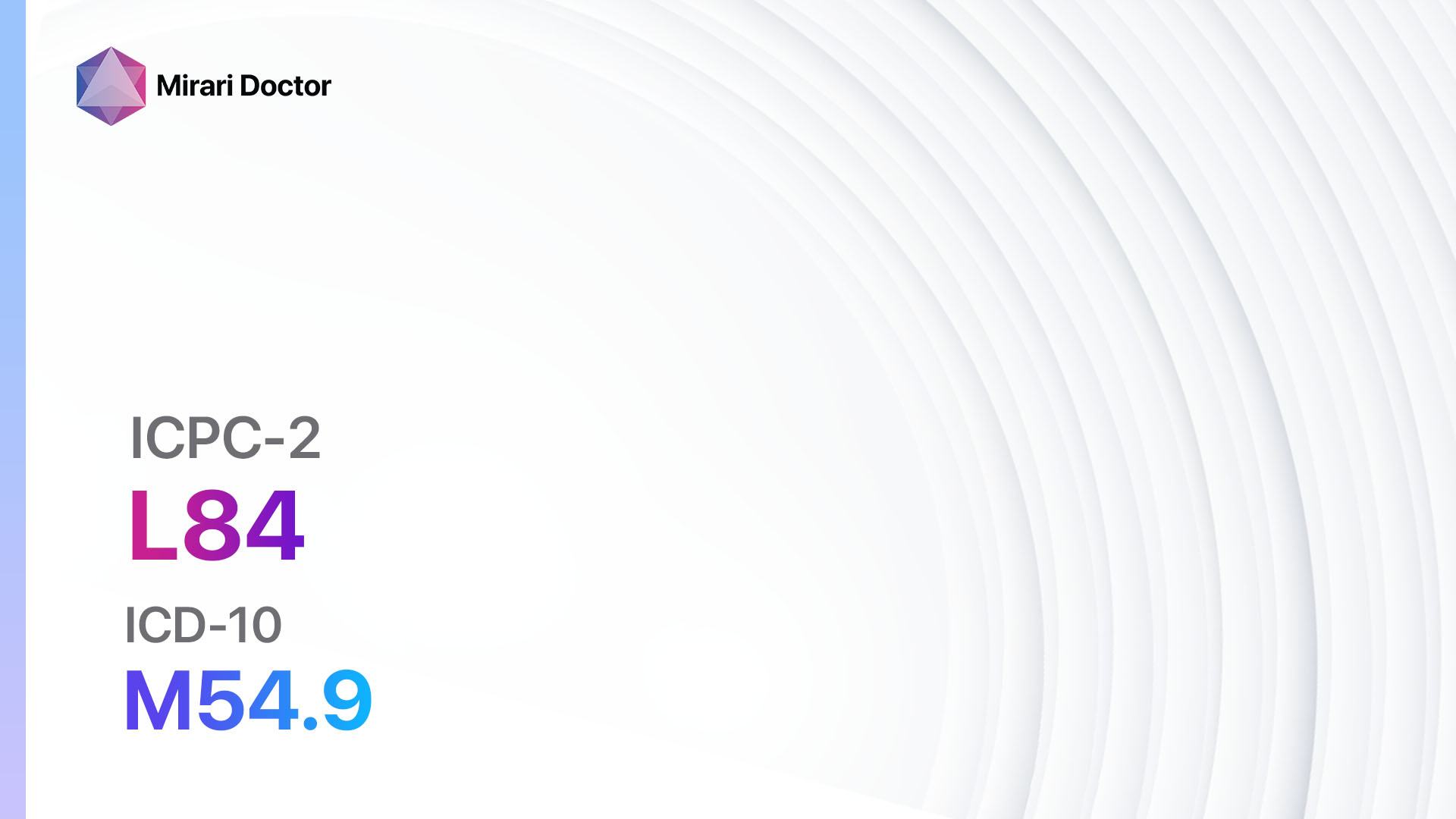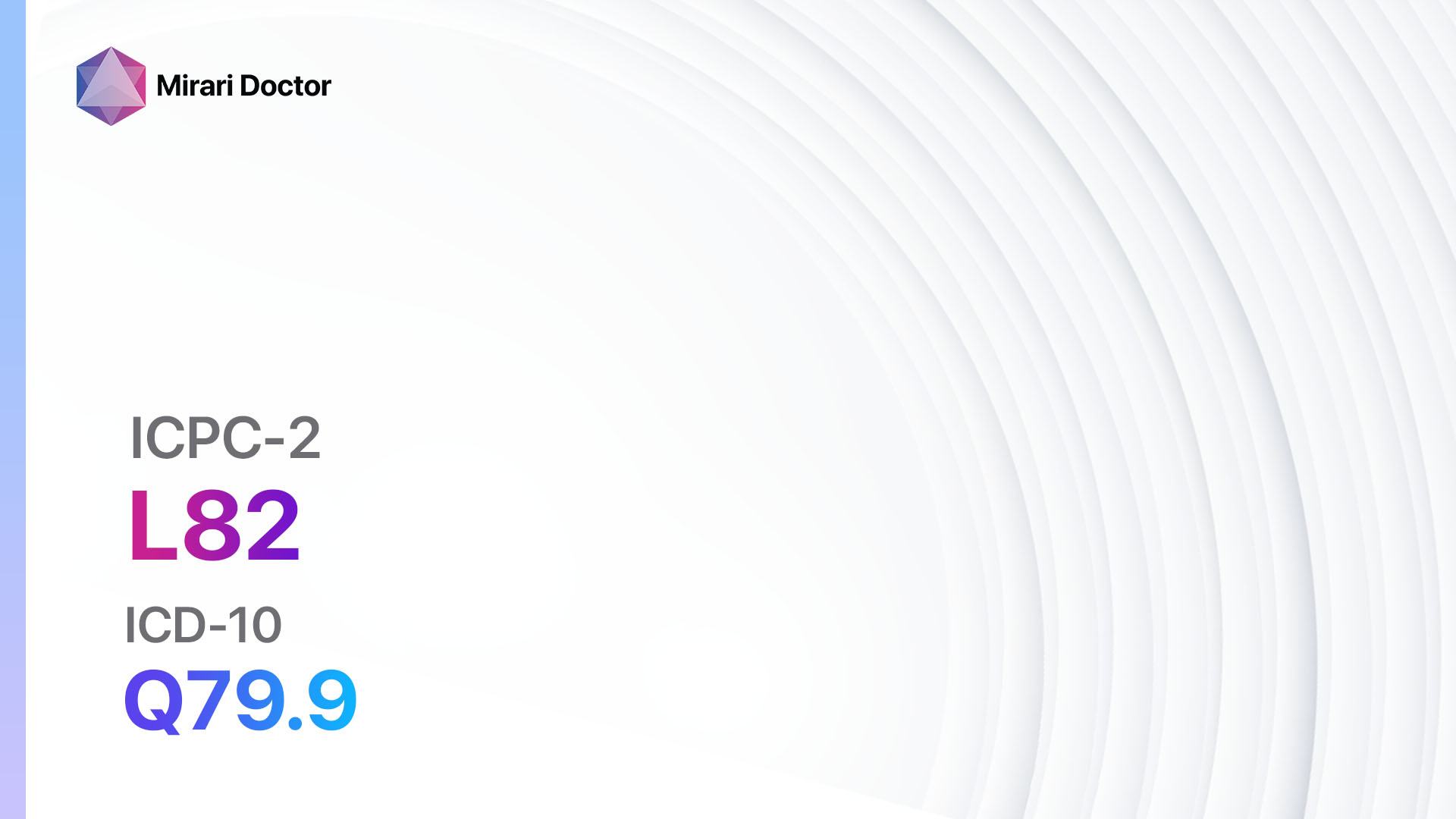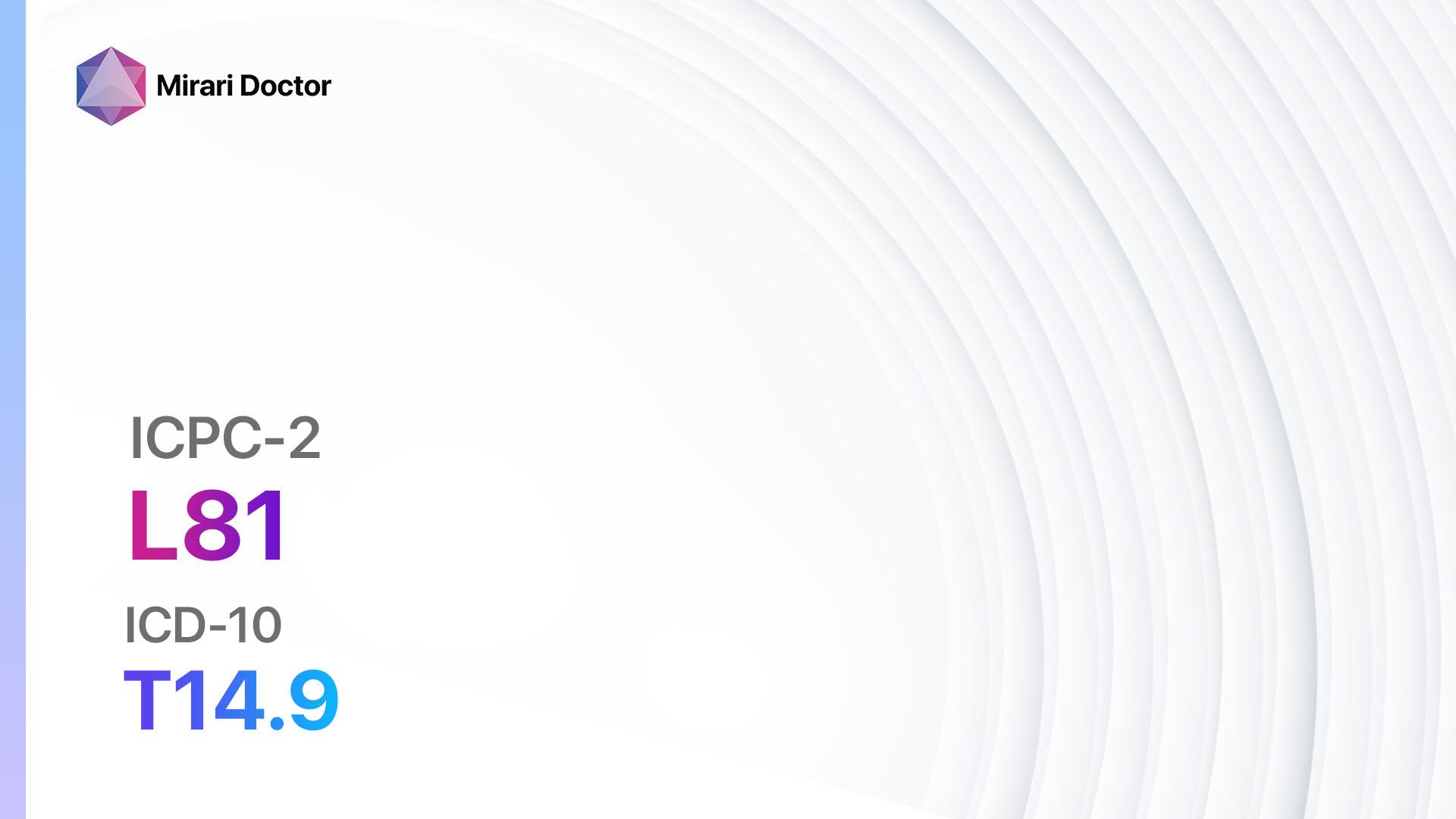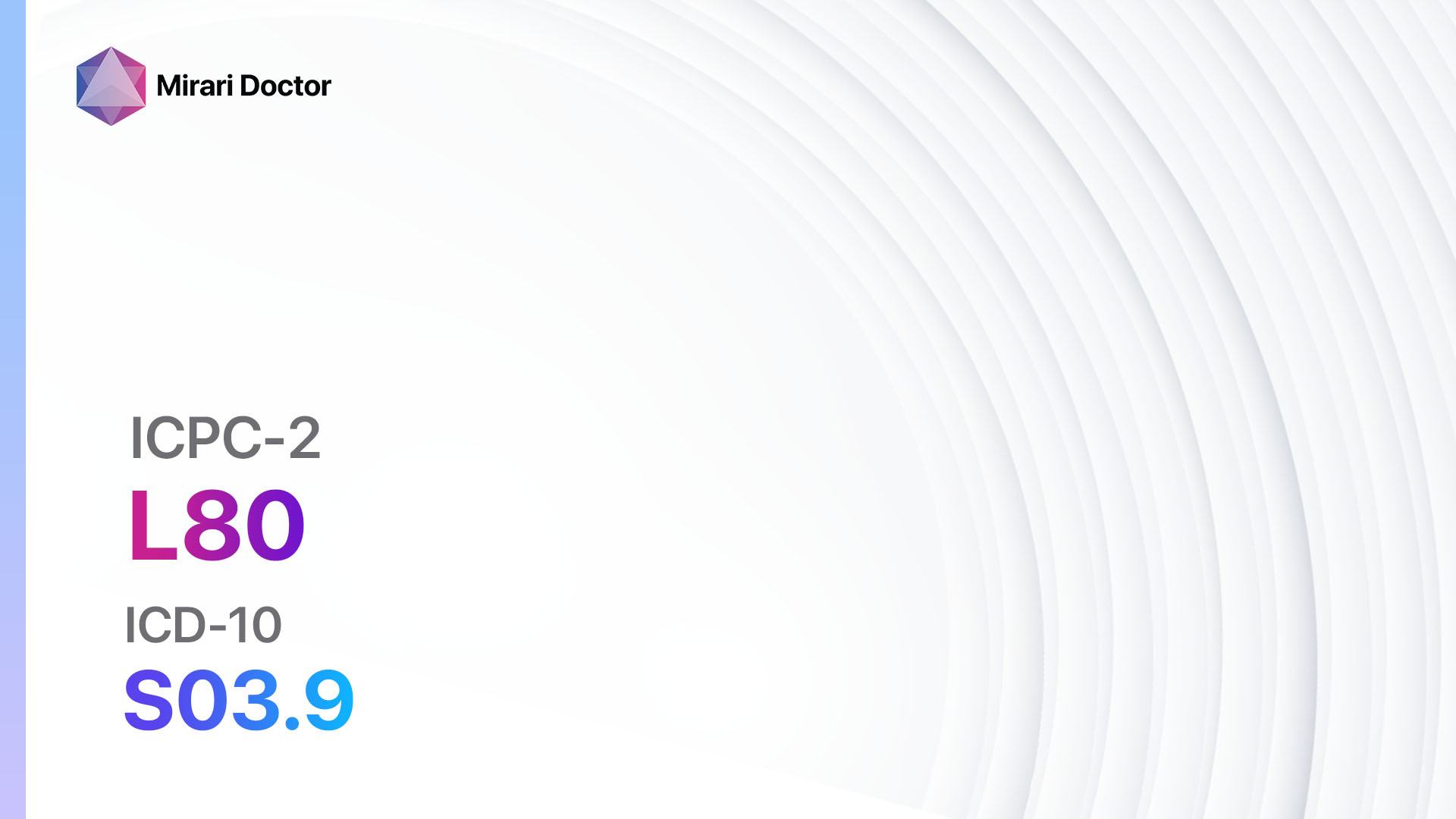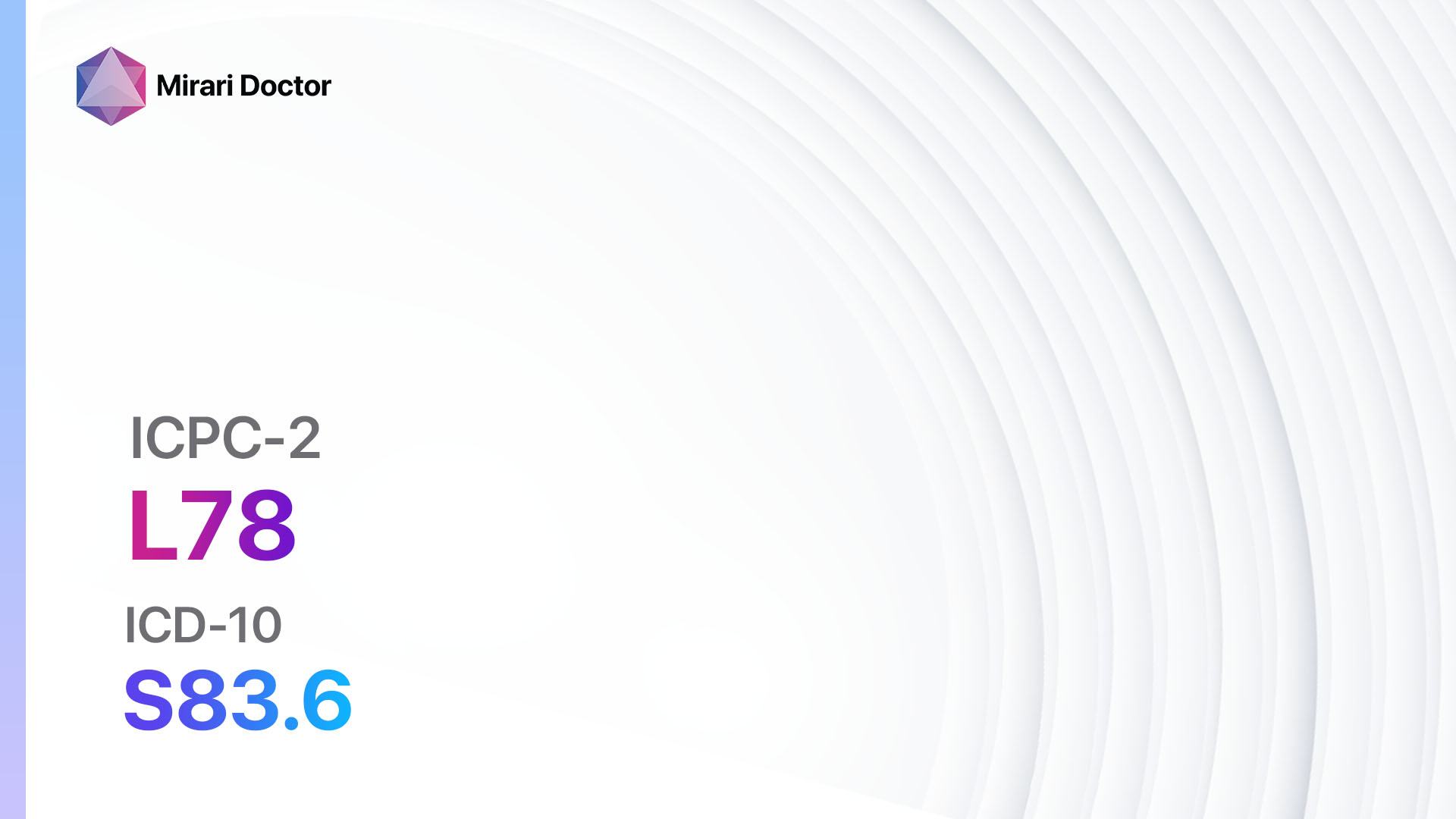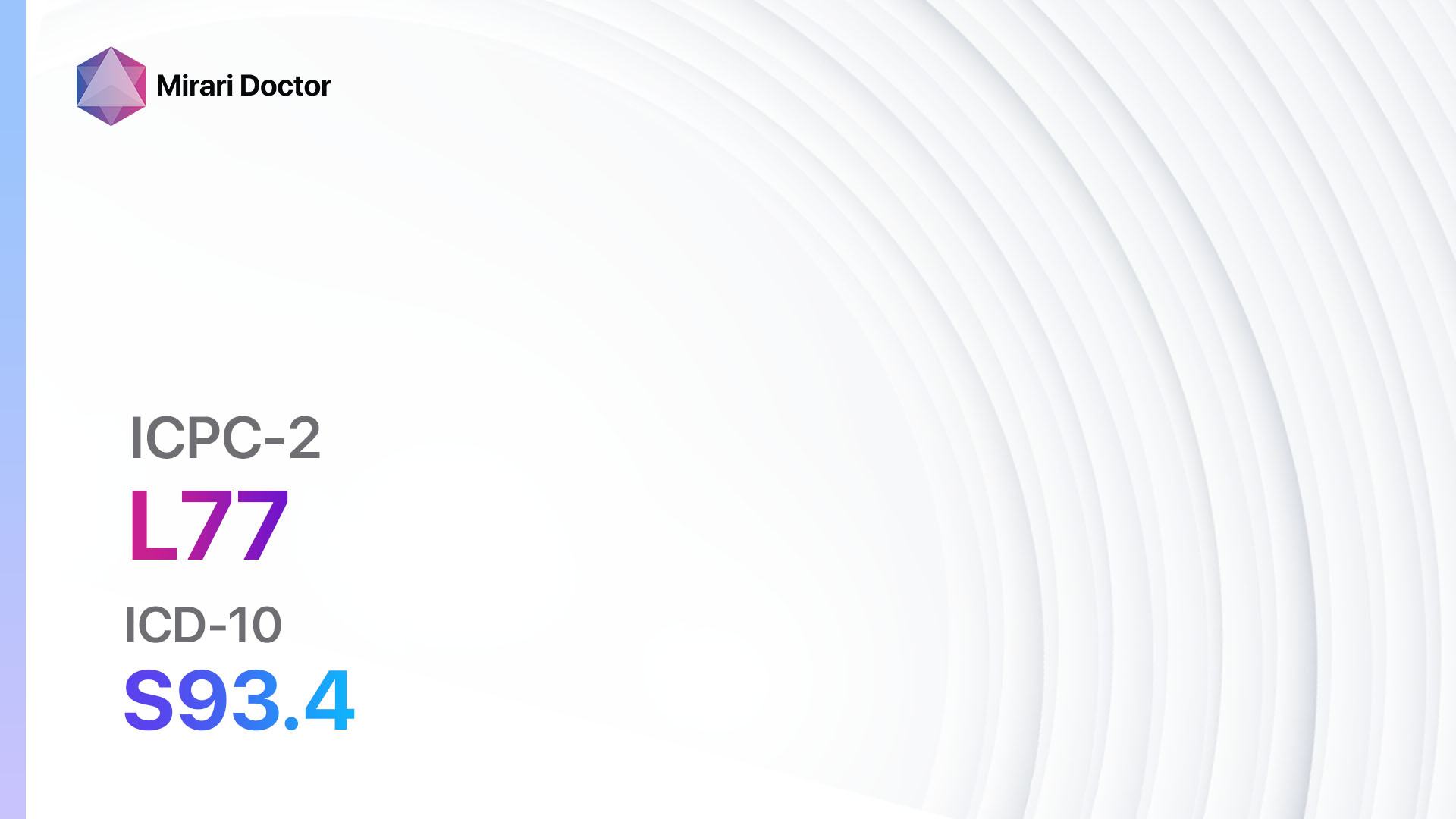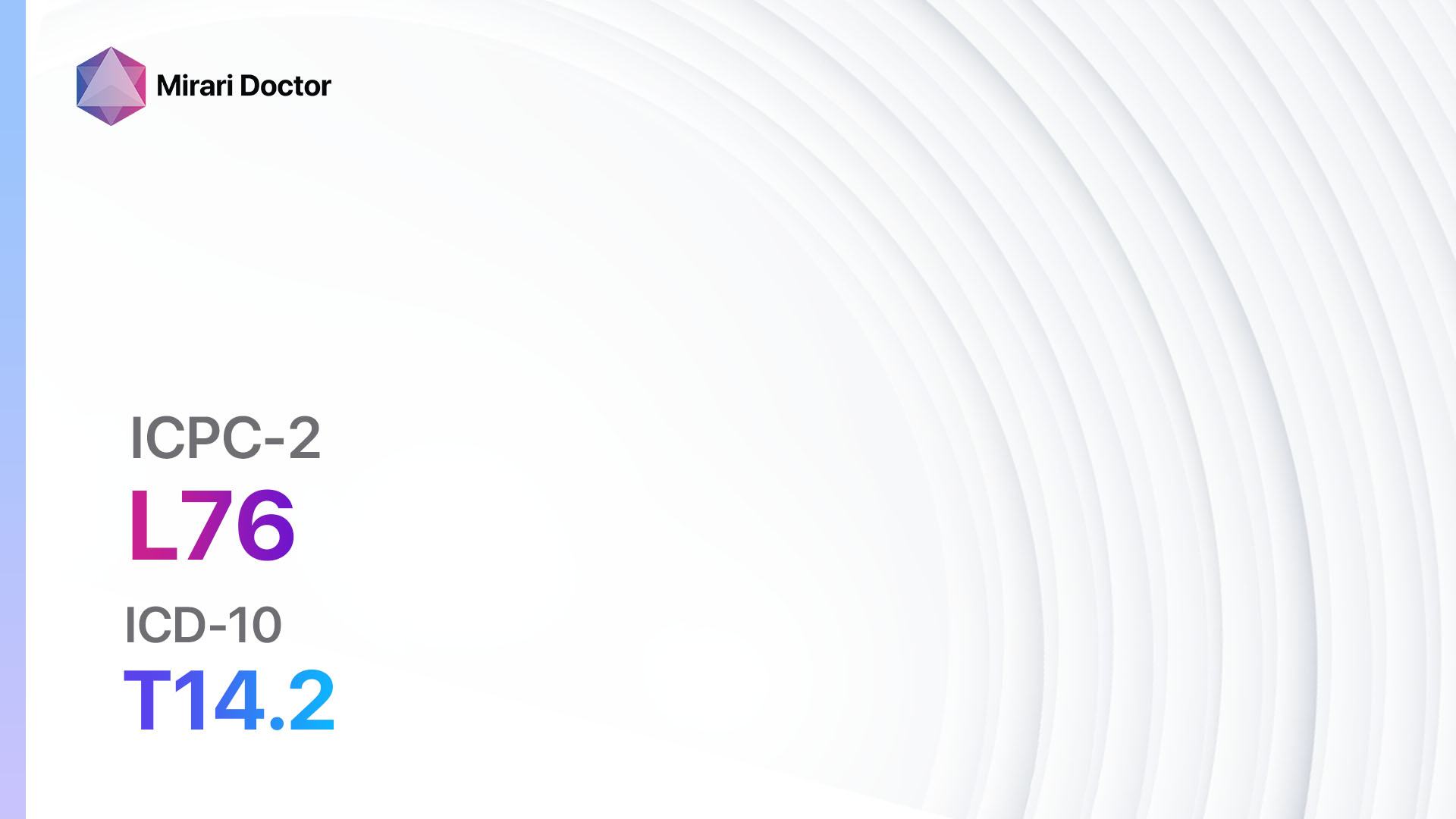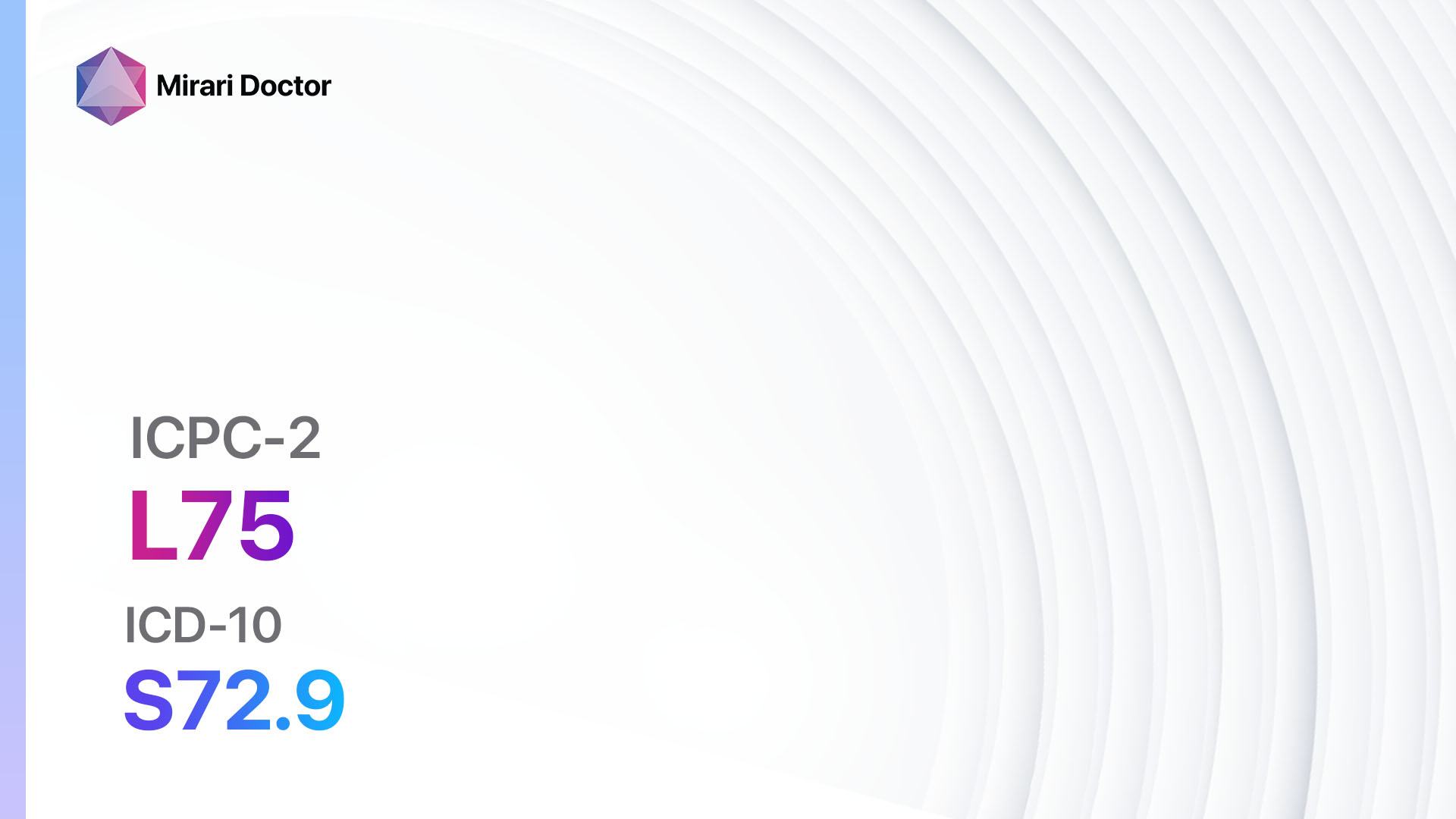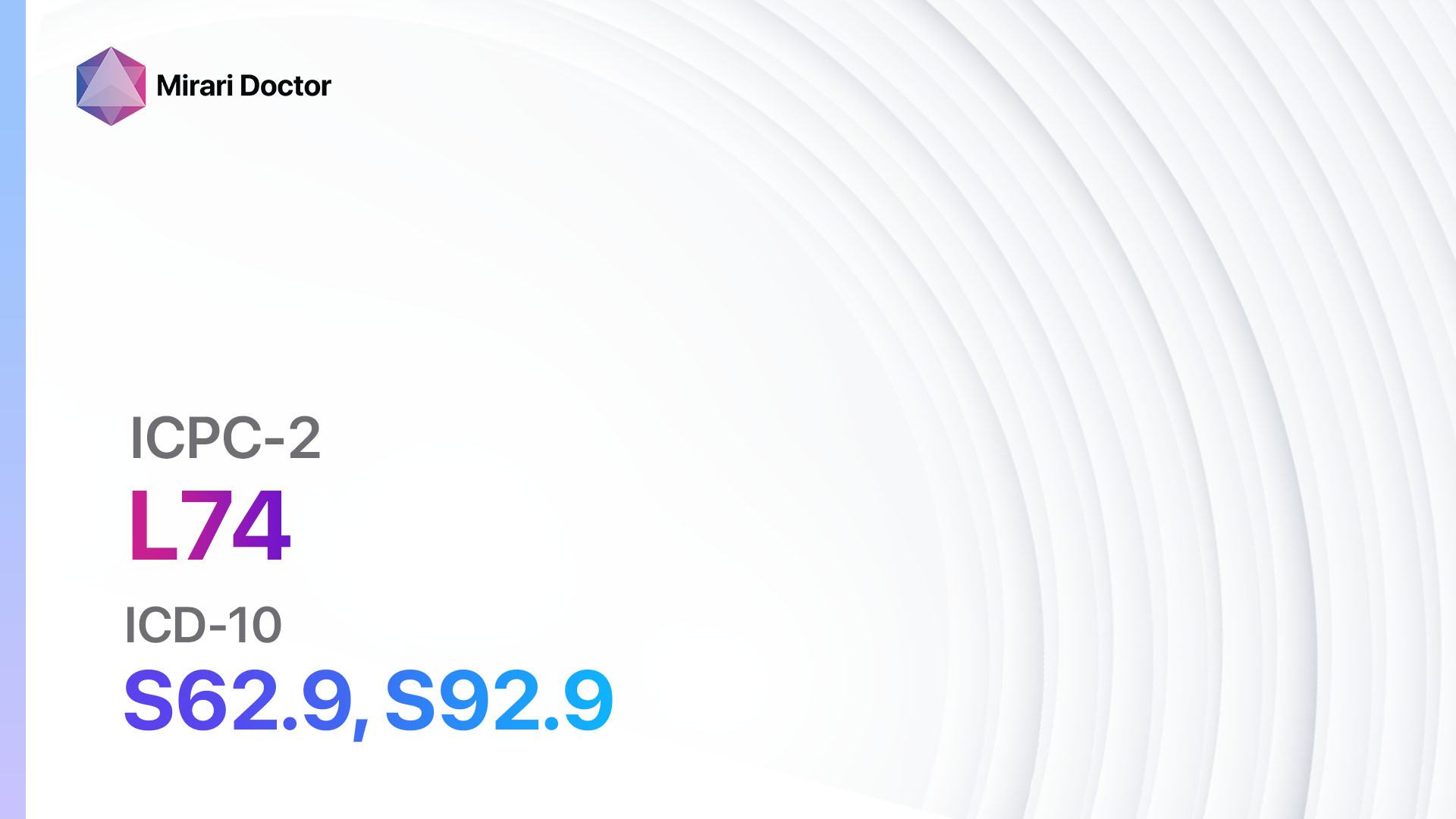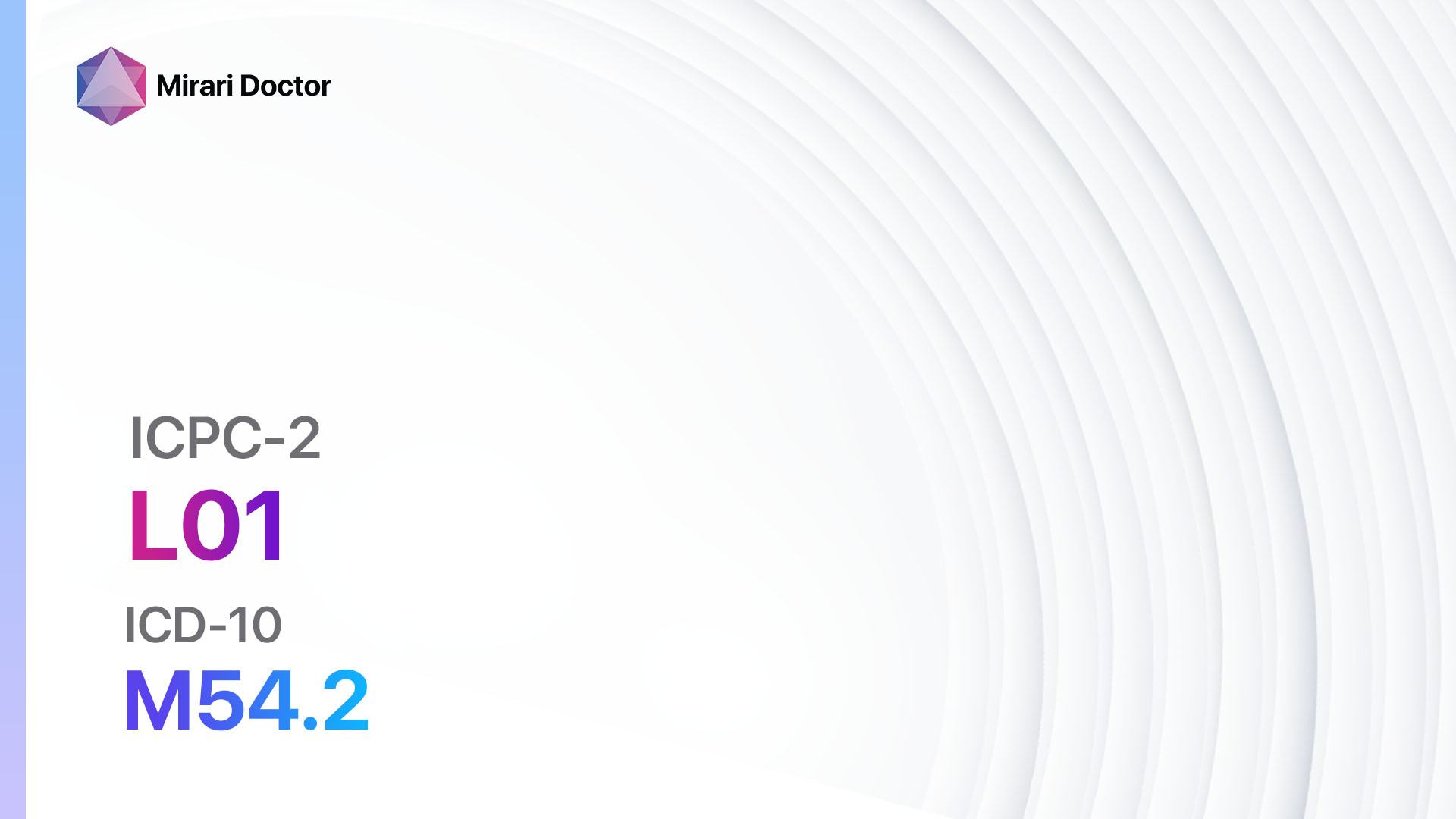
Introduction
Neck symptoms or complaints can be indicative of various underlying conditions, ranging from musculoskeletal issues to more serious conditions such as infections or tumors[1]. This guide aims to provide a comprehensive overview of the diagnostic steps, possible interventions, and lifestyle modifications that can be considered for patients presenting with neck symptoms.
Codes
Symptoms
- Neck pain: Dull, aching, or sharp pain in the neck region[4].
- Stiff neck: Difficulty or discomfort when moving the neck[5].
- Neck swelling: Visible or palpable swelling in the neck area[6].
- Neck weakness: Reduced strength or muscle weakness in the neck[7].
- Neck stiffness: Limited range of motion in the neck[8].
- Neck numbness or tingling: Sensation of numbness or tingling in the neck region[9].
- Neck rash: Skin rash or redness in the neck area[10].
- Neck deformity: Visible changes in the shape or structure of the neck.
Causes
- Musculoskeletal causes: Muscle strain, ligament sprain, or cervical disc degeneration.
- Inflammatory causes: Infections such as meningitis or lymphadenitis.
- Traumatic causes: Whiplash injury or neck fractures.
- Neurological causes: Pinched nerves or cervical radiculopathy.
- Vascular causes: Carotid artery dissection or aneurysm.
- Tumor-related causes: Benign or malignant tumors in the neck region.
- Autoimmune causes: Conditions such as rheumatoid arthritis or lupus.
Diagnostic Steps
Medical History
- Gather information about the onset, duration, and progression of neck symptoms.
- Identify any associated symptoms such as fever, headache, or difficulty swallowing.
- Assess for any recent trauma or injury to the neck.
- Inquire about any relevant medical conditions or risk factors.
Physical Examination
- Observe the patient’s posture and neck alignment.
- Palpate the neck for tenderness, swelling, or deformities.
- Assess the range of motion of the neck.
- Perform neurological examinations to evaluate muscle strength and reflexes.
- Check for any lymph node enlargement or masses in the neck region.
Laboratory Tests
- Complete blood count (CBC) to assess for signs of infection or inflammation.
- Erythrocyte sedimentation rate (ESR) or C-reactive protein (CRP) to evaluate for systemic inflammation.
- Thyroid function tests to rule out thyroid-related causes of neck symptoms.
- Infectious disease screening, such as a throat culture or blood tests, if an infection is suspected.
- Tumor markers, such as carcinoembryonic antigen (CEA) or alpha-fetoprotein (AFP), if malignancy is suspected.
Diagnostic Imaging
- X-rays of the neck to evaluate for fractures, dislocations, or degenerative changes.
- CT scan or MRI of the neck to visualize soft tissues, bones, and blood vessels.
- Ultrasound of the neck to assess for abnormalities in the thyroid or lymph nodes.
- Angiography or Doppler ultrasound to evaluate blood flow in the neck vessels.
- PET scan or biopsy for suspected tumors or malignancies.
Other Tests
- Electromyography (EMG) and nerve conduction studies (NCS) to assess nerve function.
- Fine-needle aspiration (FNA) biopsy for suspicious neck masses or lymph nodes.
- Lumbar puncture if meningitis or other central nervous system infections are suspected.
- Genetic testing for hereditary conditions such as Marfan syndrome or Ehlers-Danlos syndrome.
Follow-up and Patient Education
- Schedule follow-up appointments to monitor the progress of the condition and adjust treatment if necessary.
- Provide education on self-care measures, such as neck exercises, posture correction, and pain management techniques.
- Discuss the importance of adhering to prescribed medications or interventions.
- Encourage the patient to report any worsening symptoms or new concerns.
Possible Interventions
Traditional Interventions
Medications:
Top 5 drugs for neck symptoms/complaints:
- Nonsteroidal anti-inflammatory drugs (NSAIDs) (e.g., Ibuprofen, Naproxen):
- Cost: Generic versions can be $3-$20/month.
- Contraindications: Active peptic ulcer disease, history of gastrointestinal bleeding.
- Side effects: Upset stomach, heartburn, increased risk of bleeding.
- Severe side effects: Severe allergic reactions, kidney damage.
- Drug interactions: Anticoagulants, corticosteroids.
- Warning: Prolonged use may increase the risk of cardiovascular events.
- Muscle relaxants (e.g., Cyclobenzaprine, Methocarbamol):
- Cost: Generic versions can be $10-$30/month.
- Contraindications: Glaucoma, urinary retention.
- Side effects: Drowsiness, dizziness, dry mouth.
- Severe side effects: Severe allergic reactions, liver toxicity.
- Drug interactions: Sedatives, alcohol.
- Warning: Avoid driving or operating heavy machinery while taking muscle relaxants.
- Antidepressants (e.g., Amitriptyline, Duloxetine):
- Cost: Generic versions can be $10-$40/month.
- Contraindications: Recent myocardial infarction, narrow-angle glaucoma.
- Side effects: Sedation, dry mouth, constipation.
- Severe side effects: Suicidal thoughts, serotonin syndrome.
- Drug interactions: Monoamine oxidase inhibitors (MAOIs), other serotonergic drugs.
- Warning: May take several weeks to achieve therapeutic effect.
- Corticosteroids (e.g., Prednisone, Methylprednisolone):
- Cost: Generic versions can be $10-$50/month.
- Contraindications: Active infections, uncontrolled diabetes.
- Side effects: Increased appetite, weight gain, mood changes.
- Severe side effects: Adrenal suppression, osteoporosis.
- Drug interactions: Nonsteroidal anti-inflammatory drugs (NSAIDs), anticoagulants.
- Warning: Long-term use may require gradual tapering to avoid adrenal insufficiency.
- Anticonvulsants (e.g., Gabapentin, Pregabalin):
- Cost: Generic versions can be $10-$50/month.
- Contraindications: Hypersensitivity to anticonvulsants.
- Side effects: Dizziness, drowsiness, peripheral edema.
- Severe side effects: Suicidal thoughts, severe skin reactions.
- Drug interactions: Opioids, benzodiazepines.
- Warning: May cause dependence or withdrawal symptoms with long-term use.
Alternative Drugs:
- Topical analgesics (e.g., Lidocaine patches): Provide localized pain relief. Cost: $20-$50 per box.
- Capsaicin cream: Derived from chili peppers, can help alleviate pain. Cost: $10-$20 per tube.
- Acetaminophen: Mild analgesic option for pain relief. Cost: $5-$10 per bottle.
- Tricyclic antidepressants (e.g., Nortriptyline): Alternative to amitriptyline for neuropathic pain. Cost: $10-$40/month.
- Antiepileptic drugs (e.g., Carbamazepine): Alternative to gabapentin for neuropathic pain. Cost: $10-$50/month.
Surgical Procedures:
- Cervical discectomy and fusion: Removal of a herniated disc and fusion of adjacent vertebrae. Cost: $20,000 to $50,000.
- Cervical laminectomy: Removal of the lamina to relieve pressure on the spinal cord or nerves. Cost: $15,000 to $40,000.
- Cervical artificial disc replacement: Replacement of a damaged disc with an artificial disc. Cost: $25,000 to $60,000.
- Cervical corpectomy: Removal of a vertebral body to decompress the spinal cord. Cost: $30,000 to $70,000.
- Cervical foraminotomy: Enlargement of the neural foramen to relieve nerve compression. Cost: $15,000 to $40,000.
Alternative Interventions
- Acupuncture: May help alleviate neck pain and improve range of motion. Cost: $60-$120 per session.
- Chiropractic care: Manual manipulation of the spine to relieve neck pain and improve alignment. Cost: $30-$200 per session.
- Massage therapy: Manipulation of soft tissues to reduce muscle tension and improve circulation. Cost: $50-$100 per session.
- Physical therapy: Targeted exercises and stretches to improve neck strength and flexibility. Cost: $50-$150 per session.
- Yoga: Incorporates stretching, strengthening, and relaxation techniques to reduce neck pain. Cost: $10-$20 per class.
Lifestyle Interventions
- Posture correction: Encourage maintaining proper posture during daily activities to reduce strain on the neck.
- Ergonomic adjustments: Ensure proper workstation setup and use of supportive pillows or chairs.
- Heat or cold therapy: Apply heat or cold packs to the neck to alleviate pain and reduce inflammation.
- Stress management: Techniques such as deep breathing, meditation, or yoga can help reduce muscle tension and stress-related neck symptoms.
- Regular exercise: Engaging in low-impact exercises, such as swimming or walking, can improve overall neck strength and flexibility.
It is important to note that the cost ranges provided are approximate and may vary depending on the location and availability of the interventions.
Mirari Cold Plasma Alternative Intervention
Understanding Mirari Cold Plasma
- Safe and Non-Invasive Treatment: Mirari Cold Plasma is a safe and non-invasive treatment option for various skin conditions. It does not require incisions, minimizing the risk of scarring, bleeding, or tissue damage.
- Efficient Extraction of Foreign Bodies: Mirari Cold Plasma facilitates the removal of foreign bodies from the skin by degrading and dissociating organic matter, allowing easier access and extraction.
- Pain Reduction and Comfort: Mirari Cold Plasma has a local analgesic effect, providing pain relief during the treatment, making it more comfortable for the patient.
- Reduced Risk of Infection: Mirari Cold Plasma has antimicrobial properties, effectively killing bacteria and reducing the risk of infection.
- Accelerated Healing and Minimal Scarring: Mirari Cold Plasma stimulates wound healing and tissue regeneration, reducing healing time and minimizing the formation of scars.
Mirari Cold Plasma Prescription
Video instructions for using Mirari Cold Plasma Device – L01 Neck symptom/complain (ICD-10:M54.2)
| Mild | Moderate | Severe |
| Mode setting: 2 (Wound Healing) Location: 0 (Localized) Morning: 15 minutes, Evening: 15 minutes |
Mode setting: 2 (Wound Healing) Location: 0 (Localized) Morning: 30 minutes, Lunch: 30 minutes, Evening: 30 minutes |
Mode setting: 2 (Wound Healing) Location: 0 (Localized) Morning: 30 minutes, Lunch: 30 minutes, Evening: 30 minutes |
| Mode setting: 9 (Arthritis) Location: 0 (Localized) Morning: 15 minutes, Evening: 15 minutes |
Mode setting: 9 (Arthritis) Location: 0 (Localized) Morning: 30 minutes, Lunch: 30 minutes, Evening: 30 minutes |
Mode setting: 9 (Arthritis) Location: 0 (Localized) Morning: 30 minutes, Lunch: 30 minutes, Evening: 30 minutes |
| Mode setting: 7 (Immunotherapy) Location: 1 (Sacrum) Morning: 15 minutes, Evening: 15 minutes |
Mode setting: 7 (Immunotherapy) Location: 1 (Sacrum) Morning: 30 minutes, Lunch: 30 minutes, Evening: 30 minutes |
Mode setting: 7 (Immunotherapy) Location: 1 (Sacrum) Morning: 30 minutes, Lunch: 30 minutes, Evening: 30 minutes |
| Total Morning: 45 minutes approx. $7.50 USD, Evening: 45 minutes approx. $7.50 USD |
Total Morning: 90 minutes approx. $15 USD, Lunch: 90 minutes approx. $15 USD, Evening: 90 minutes approx. $15 USD, |
Total Morning: 90 minutes approx. $15 USD, Lunch: 90 minutes approx. $15 USD, Evening: 90 minutes approx. $15 USD, |
| Usual treatment for 7-60 days approx. $105 USD – $900 USD | Usual treatment for 6-8 weeks approx. $1,890 USD – $2,520 USD |
Usual treatment for 3-6 months approx. $4,050 USD – $8,100 USD
|
 |
|
Use the Mirari Cold Plasma device to treat Neck symptom/complain effectively.
WARNING: MIRARI COLD PLASMA IS DESIGNED FOR THE HUMAN BODY WITHOUT ANY ARTIFICIAL OR THIRD PARTY PRODUCTS. USE OF OTHER PRODUCTS IN COMBINATION WITH MIRARI COLD PLASMA MAY CAUSE UNPREDICTABLE EFFECTS, HARM OR INJURY. PLEASE CONSULT A MEDICAL PROFESSIONAL BEFORE COMBINING ANY OTHER PRODUCTS WITH USE OF MIRARI.
Step 1: Cleanse the Skin
- Start by cleaning the affected area of the skin with a gentle cleanser or mild soap and water. Gently pat the area dry with a clean towel.
Step 2: Prepare the Mirari Cold Plasma device
- Ensure that the Mirari Cold Plasma device is fully charged or has fresh batteries as per the manufacturer’s instructions. Make sure the device is clean and in good working condition.
- Switch on the Mirari device using the power button or by following the specific instructions provided with the device.
- Some Mirari devices may have adjustable settings for intensity or treatment duration. Follow the manufacturer’s instructions to select the appropriate settings based on your needs and the recommended guidelines.
Step 3: Apply the Device
- Place the Mirari device in direct contact with the affected area of the skin. Gently glide or hold the device over the skin surface, ensuring even coverage of the area experiencing.
- Slowly move the Mirari device in a circular motion or follow a specific pattern as indicated in the user manual. This helps ensure thorough treatment coverage.
Step 4: Monitor and Assess:
- Keep track of your progress and evaluate the effectiveness of the Mirari device in managing your Neck symptom/complain. If you have any concerns or notice any adverse reactions, consult with your health care professional.
Note
This guide is for informational purposes only and should not replace the advice of a medical professional. Always consult with your healthcare provider or a qualified medical professional for personal advice, diagnosis, or treatment. Do not solely rely on the information presented here for decisions about your health. Use of this information is at your own risk. The authors of this guide, nor any associated entities or platforms, are not responsible for any potential adverse effects or outcomes based on the content.
Mirari Cold Plasma System Disclaimer
- Purpose: The Mirari Cold Plasma System is a Class 2 medical device designed for use by trained healthcare professionals. It is registered for use in Thailand and Vietnam. It is not intended for use outside of these locations.
- Informational Use: The content and information provided with the device are for educational and informational purposes only. They are not a substitute for professional medical advice or care.
- Variable Outcomes: While the device is approved for specific uses, individual outcomes can differ. We do not assert or guarantee specific medical outcomes.
- Consultation: Prior to utilizing the device or making decisions based on its content, it is essential to consult with a Certified Mirari Tele-Therapist and your medical healthcare provider regarding specific protocols.
- Liability: By using this device, users are acknowledging and accepting all potential risks. Neither the manufacturer nor the distributor will be held accountable for any adverse reactions, injuries, or damages stemming from its use.
- Geographical Availability: This device has received approval for designated purposes by the Thai and Vietnam FDA. As of now, outside of Thailand and Vietnam, the Mirari Cold Plasma System is not available for purchase or use.
References
- Binder, A. I. (2007). Cervical spondylosis and neck pain. BMJ, 334(7592), 527-531.
- ICPC-2: International Classification of Primary Care, Second edition. (1998). World Health Organization.
- ICD-10: International Statistical Classification of Diseases and Related Health Problems 10th Revision. (2019). World Health Organization.
- Fejer, R., Kyvik, K. O., & Hartvigsen, J. (2006). The prevalence of neck pain in the world population: a systematic critical review of the literature. European spine journal, 15(6), 834-848.
- Hoy, D. G., Protani, M., De, R., & Buchbinder, R. (2010). The epidemiology of neck pain. Best practice & research Clinical rheumatology, 24(6), 783-792.
- Hoang, J. K., Vanka, J., Ludwig, B. J., & Glastonbury, C. M. (2013). Evaluation of cervical lymph nodes in head and neck cancer with CT and MRI: tips, traps, and a systematic approach. American Journal of Roentgenology, 200(1), W17-W25.
- Ylinen, J., Salo, P., Nykänen, M., Kautiainen, H., & Häkkinen, A. (2004). Decreased isometric neck strength in women with chronic neck pain and the repeatability of neck strength measurements. Archives of physical medicine and rehabilitation, 85(8), 1303-1308.
- Dall’Alba, P. T., Sterling, M. M., Treleaven, J. M., Edwards, S. L., & Jull, G. A. (2001). Cervical range of motion discriminates between asymptomatic persons and those with whiplash. Spine, 26(19), 2090-2094.
- Kuijper, B., Tans, J. T. J., Schimsheimer, R. J., Van Der Kallen, B. F. W., Beelen, A., Nollet, F., & De Visser, M. (2009). Degenerative cervical radiculopathy: diagnosis and conservative treatment. A review. European Journal of Neurology, 16(1), 15-20.
- Foti, C., Romita, P., & Vestita, M. (2011). Skin-colored nodules on the neck. International journal of dermatology, 50(12), 1380-1382.
Related articles
Made in USA



